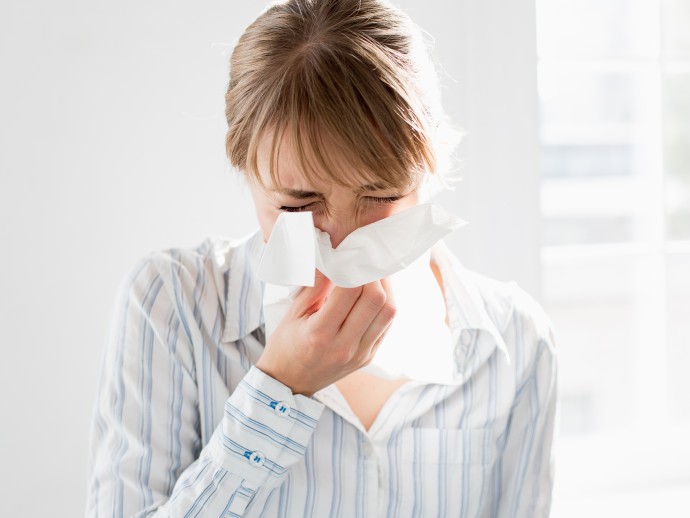
How can we reduce our exposure to allergens and side step reactions in the workplace? Avoidance might be simpler than you think if employers and employees take a few steps.
Common airborne allergens
Mold
Molds can occur in any dark place where the conditions are right: high humidity or moisture, organic material (like the wood in a wood-frame building), mold spores and oxygen.
How to mitigate mold growth
Drying out murky, damp places is the best strategy here. Employers can alleviate concerns by having a professional check for molds in areas most likely steeped in humidity. If possible, indoor air should be monitored, with relative humidity maintained between 30 to 50 percent.
Regular removal of water from humidifier tanks or refrigerator cooling coils greatly reduces standing water and moisture, which inhibits mold growth.
Dust mites
Like molds, dust mites thrive in moist places, with an added preference for warm environments. In the workplace, carpets and upholstered furniture can be the perfect breeding ground for dust mites.
How to curb dust mites
If replacing upholstered and carpeted surfaces with more cleanable corks, leathers, laminate or wood flooring isn’t in the cards, regular and thorough cleaning is an excellent alternative. Carpet, upholstery, drapery and blinds should be cleaned with a high-efficiency particulate air (HEPA) filter vacuum to remove dust. Alternatively, a central vacuum system will remove particles to the exterior of the building.
Regular vacuuming is an effective strategy for reducing dust, but it can also stir up dust mites and make them temporarily airborne. The little critters should be wiped away with a damp cloth after they’ve landed on hard surfaces like desks, workstations and countertops.
Volatile organic compounds (VOCs)
VOCs are carbon-based particles found in many materials that off-gas into the environment under normal indoor conditions. The most common source of VOC emissions in the workplace is solvent-based chemicals. They affect our indoor air quality by emitting harmful gases like ozone, inorganic gases and formaldehyde. Examples of possible solvents in the work environment include paint, wood-finishing materials, carpeting, adhesives and photocopy machine toners.
How to reduce VOCs
Employers can locate equipment that uses toner in a well-ventilated area so workers won’t be exposed to VOCs and toner particulate. A separate ventilated room is preferable. As employees, we can help by following the rule, “think before you print.”
If there is an opportunity to paint workplace surfaces, products with a low VOC content should be chosen. Low-VOC paints and products also give off a less detectable odor.
Fragrance
The definition of scented fragrance is broad, making it difficult to identify one single chemical compound as the main cause of a reaction.
How to limit fragrances
Reducing fragrance friction in the work community does not have to involve personal confrontation with the offender. Instead, employers can adopt a fragrance-free policy across the board.
Luckily, scent-free products are becoming easier to find. Visit any natural health store, where the staff can answer any questions you have and suggest a variety of low- or no-scent products. Fragrance-free cosmetics and cleaning solutions have even made their way into many drugstores and grocery outlets.






